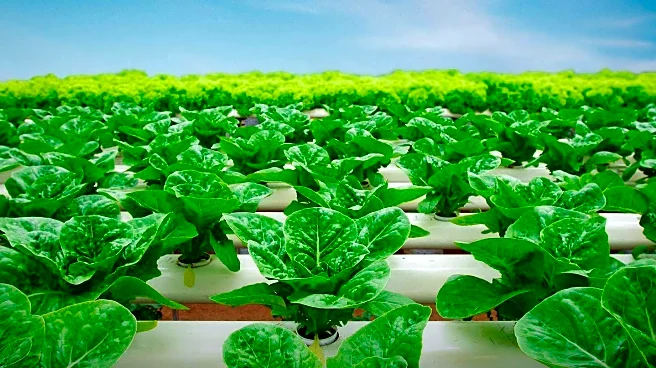What's Happening?
Regenerative farming is becoming increasingly popular in the United States as consumers show a growing interest in the origins of their food. This agricultural approach, which includes techniques such as cover crops, crop rotation, and reduced tillage,
aims to improve soil health, conserve water, and reduce chemical usage. Despite the lack of a universal standard for what constitutes regenerative farming, private investments from major brands like PepsiCo, General Mills, and McDonald's are accelerating its adoption across millions of U.S. acres. These companies are promoting crop diversity and rotational grazing for beef production. Farmers are betting that consumers will pay more for nutrient-dense food, even though many shoppers are still confused about the term 'regenerative.'
Why It's Important?
The shift towards regenerative farming has significant implications for U.S. agriculture and consumer markets. By improving soil health and reducing chemical use, regenerative practices can lead to more sustainable farming and potentially higher yields. This approach also aligns with consumer trends favoring environmentally friendly and health-conscious products. As private companies invest in these practices, it could lead to broader adoption and innovation in the agricultural sector. Farmers adopting regenerative methods may benefit from increased crop value and consistent yields, while consumers could enjoy more nutritious food options. However, the lack of clear standards and verification processes poses challenges for widespread acceptance and understanding.
What's Next?
The future of regenerative farming in the U.S. looks promising but uncertain. While private investment continues to grow, measurable results from regenerative practices take years to manifest. Farmers are sharing their experiences and knowledge to encourage others to adopt these methods. Outside incentives, such as improved prices or subsidies, may be necessary to further encourage adoption. As consumer education about regenerative farming improves, demand for these products is likely to increase. The cancellation of the federal climate-smart farming initiative in April 2025 leaves many sustainable projects without funding, but private sector support could fill this gap.
Beyond the Headlines
Regenerative farming not only aims to improve soil health but also has the potential to enhance the nutritional quality of food. Studies have shown that products from regenerative farms, such as turkey, can have higher levels of omega-3s and antioxidants compared to conventional farming methods. This nutritional benefit could become a key selling point for regenerative products, further driving consumer interest and market growth. The ethical dimension of regenerative farming, focusing on sustainability and environmental stewardship, resonates with values-based consumers who are willing to pay a premium for products that align with their beliefs.














